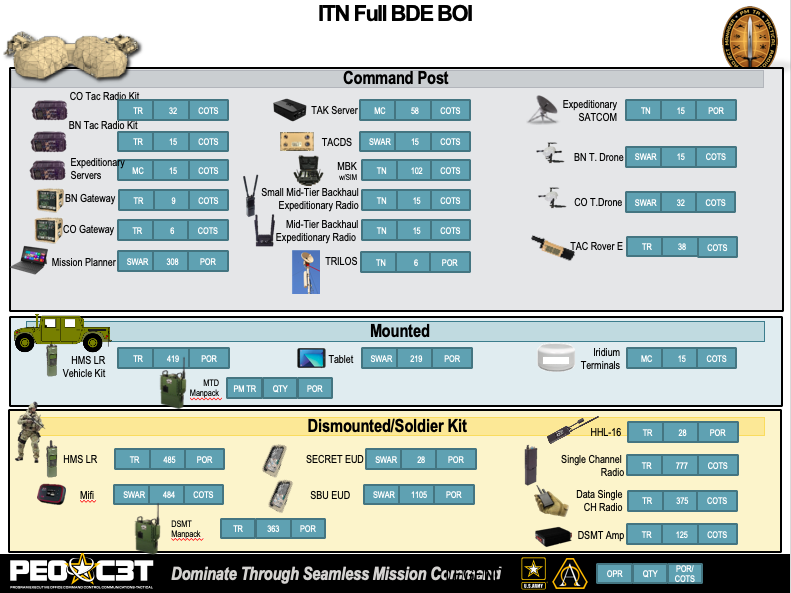August 6, 2020 | International, C4ISR
Israel increases training via virtual battlefield center amid Hezbollah tensions
By: Seth J. Frantzman Israeli Defense Forces have completed several exercises with a new Brigade and Battlegroup Mission Training Center. Tensions with Hezbollah in Lebanon have grown this month and the IDF officials say they face a constant threat of attacks and need to be prepared to respond. Virtual exercises enable a brigade's officers to train while not taking away resources from the field. The center is also part of a growing digitization effort to give more tools to the IDF during its multi-year Momentum plan that includes new networked technology. Lt. Col. Netanel Shamaka, commander of the Special Forces battalion of the Givati brigade, said the latest exercise used this new virtual combat system and it “enabled us to get an in-depth understanding of battlefield scenarios.” Two brigades have gone through the training in June and July, and up to eight more will go through by the end of the year. “The IDF's ability to improve and develop creates an atmosphere of initiative and innovation among the various combat ranks - which improves combat capability. The Givati Brigade is the first brigade to begin training in this way,” Shamaka said. Training took place at the Training Command Headquarters at the Julis base near Ashkelon. The B2MTC was developed by Elbit Systems. Upgraded twice with new capabilities, databases and after-action reports, the virtual simulator provides better coordination on the battlefield, according to Tal Cohen, senior director of land training and simulation at Elbit Systems. Virtual training centers, like the one the IDF uses, have been increasingly popular worldwide. Elbit points to its work with the Royal Netherland Army simulation center (SimCen). “Military operations are becoming increasingly complex, while large-scale exercise opportunities occur less frequently due to cost, logistics and environmental constraints. Elbit Systems' new trainer provides Armed Forces with a flexible and scalable solution to train commanders,” according to Elbit Systems. The Givati brigade is usually deployed in southern Israel opposite the Gaza frontier. “The training prepared us for battle from a different angle. we will implement this on the battlefield on the day of command,” Shamaka said. Israel has faced tensions with Hamas in Gaza over the last years, including more than 1,500 rockets fired and clashes along the border, incidents at sea and involving drones. In addition, on July 23 Israel boosted ground forces along the Lebanese border over concerns about escalation with Hezbollah. Israel is also involved in a multi-year campaign to confront Iranian elements in Syria and around the region. This complex battlefield, using 5th generation F-35s and the latest air defense, with more concentration on special forces is suited to virtual training because modern commanders have more technology at their fingertips and face larger challenges dealing with systems that involve artificial intelligence and algorithms to aid in battle management. During the recent training soldiers experienced fighting in simulated urban terrain fortified by Hezbollah. The simulators are divided along the lines of a brigade, with command rooms and platoon leaders and company commanders and exercises continuing for several days. Replicas of Lebanese villages appear on screens with the threatsthat the soldiers would encounter, such as Hezbollah bunkers. The system documents failures in the field and virtual casualties inflicted to help units learn from mistakes. Because the IDF's Momentum plan foresees bringing as many capabilities to the front as quickly as possible during a conflict, this digital battlefield aids in improving coordination. It is supposed to close gaps between battalion and company levels as well without eliminating traditional field exercises. Cohen says recent upgrades mean the simulator gives more than 100 officers from company to brigade level access to peripheral units, logistics, UAVs, helicopters, artillery, aircraft and all the other combined arms and elements that may be present on the battlefield. That means that pilots have the opportunity to sit in the same room on the virtual trainer behind a screen and then meet with their company commander counterparts for after action discussions that wouldn't necessarily take place in a field exercise. With Hezbollah tensions overshadowing training this July, the virtual exercise mimicked real-world challenges. “The virtual exercise was designed and generated to take place on the Lebanese border, in the Northern region of Israel. Facing the constant threat of attacks from Hezbollah, the IDF needs to be prepared to respond accordingly,” Shamaka said. “Should there be a need to destroy Hezbollah's infrastructure in Lebanon, we must be able to maneuver in a populated and complex environment. This virtual simulation system provides personnel with experience and familiarizes them with the hostile environment they would need to face in the case of conflict.” In the past Israel faced challenges in the 2006 war because of communications problems between units and dealing with Hezbollah fighters dug-in to the rural terrain and rocket fire near villages. Maj. Gen. Yoel Strick, ground forces commander of the IDF since 2019 and a key part of the Momentum multi-year changes, has been pushing for increased use of the virtual simulators, Cohen said. Elbit expects an expansion of training next year. https://www.defensenews.com/global/europe/2020/07/27/israel-increases-training-via-virtual-battlefield-center-amid-hezbollah-tensions

